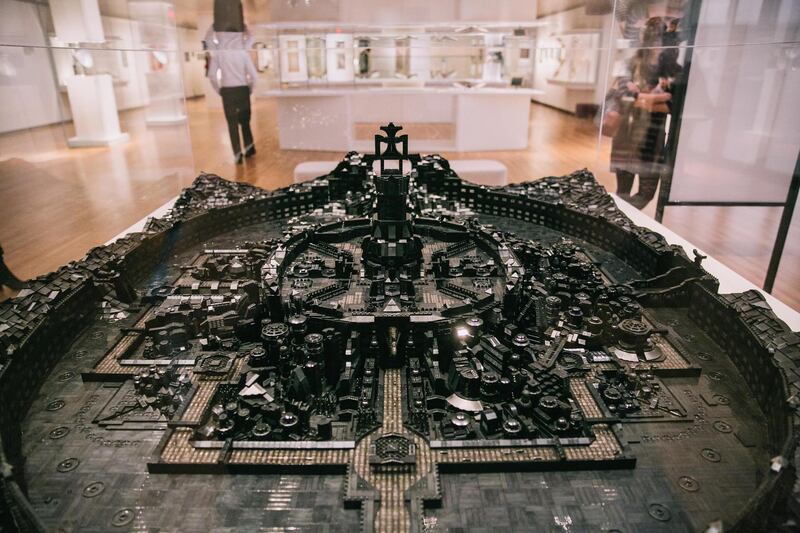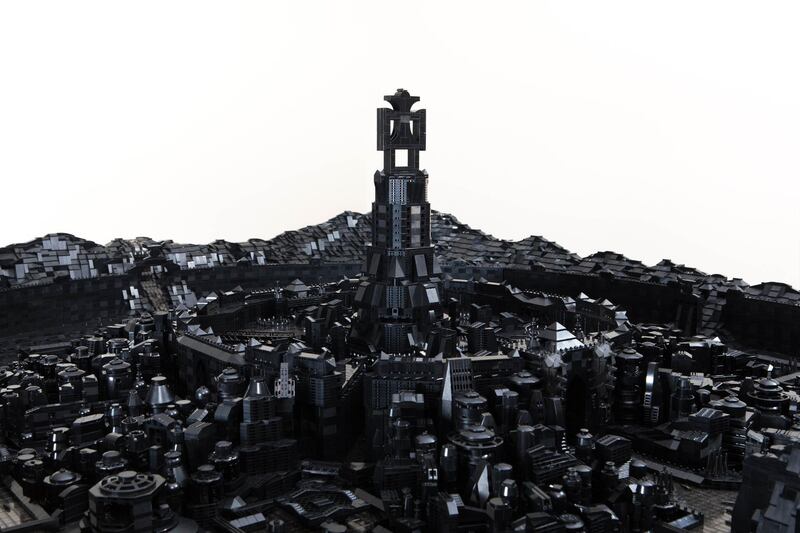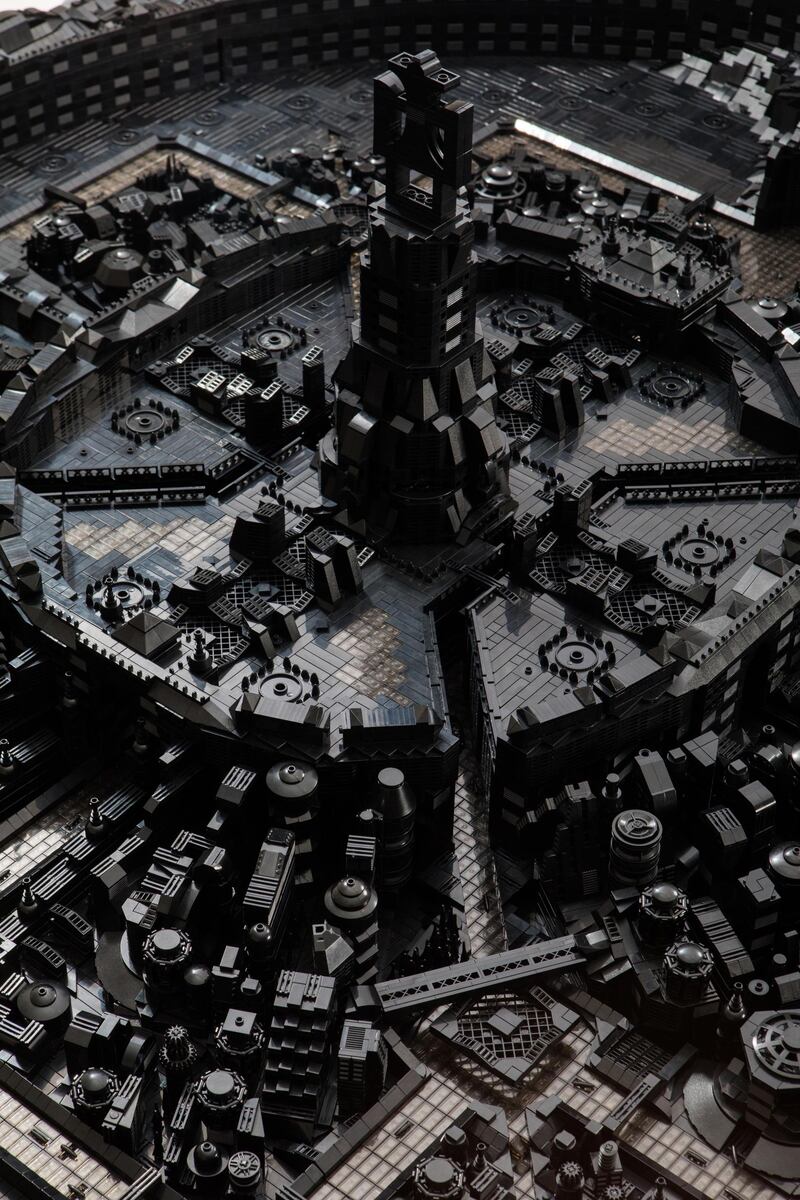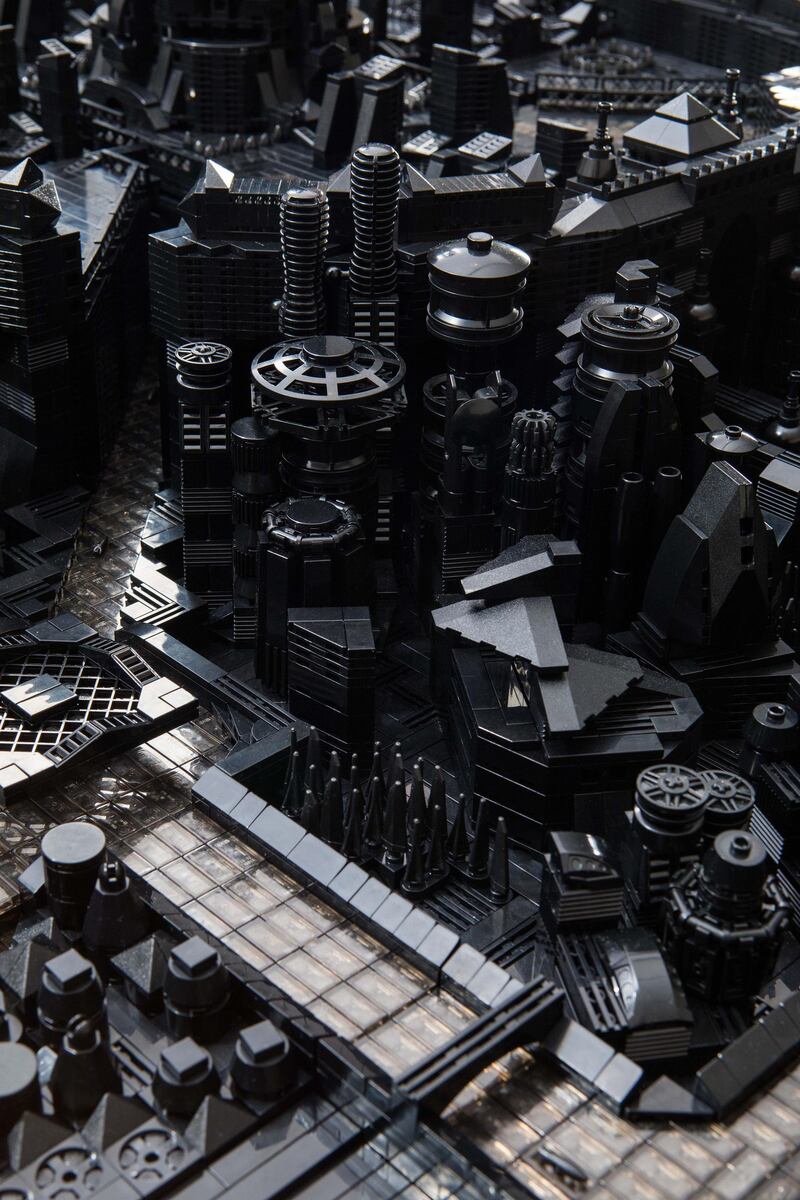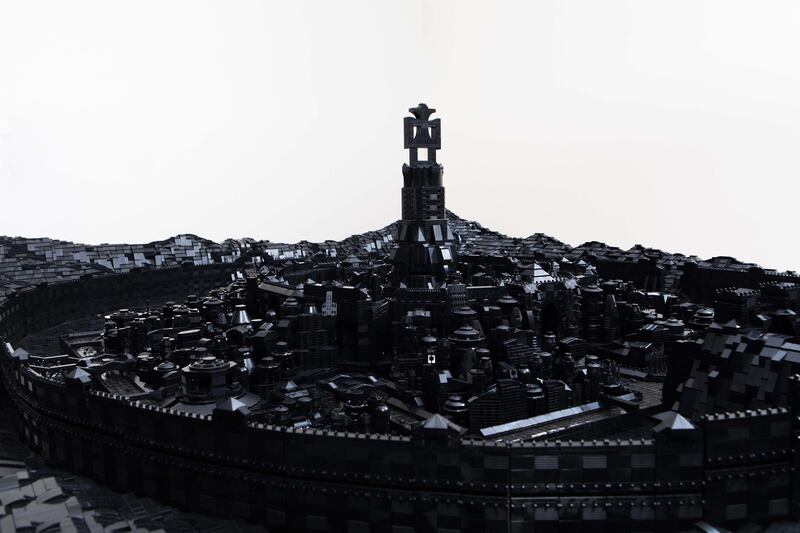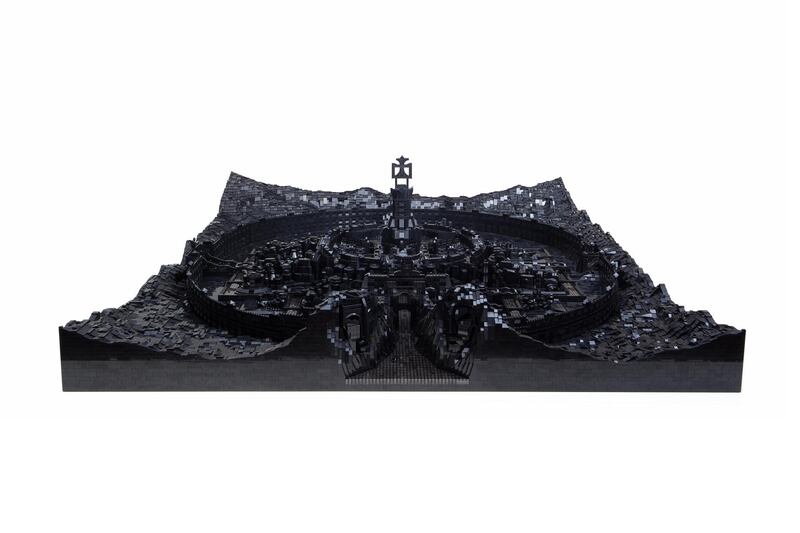An enormous sculpture made from 100,000 Lego bricks has been acquired by the Aga Khan Museum in Toronto.
The artwork, dubbed Kumbi Saleh 3020 CE, is Ghanaian-Canadian artist Ekow Nimako's futuristic reimagining of the presently-ruined medieval town in south east Mauritania. The site is believed to have been the capital of the Ghana Empire, which flourished in West Africa between the 6th and 13th centuries, and was a trans-Saharan trade hub promoting cultural exchanges between Africa, the Middle East, Asia and Europe.
Kumbi Saleh 3020 CE by Ekow Nimako which is 30 sq ft sculptural metropolis made of #LEGO and is inspired by the capital city of the medieval kingdom of Ghana, once a populous cultural hub on the trans-Saharan trade route #Toronto #art pic.twitter.com/eCE3gxtxCD
— Anarchie (@junkycosmonaut) June 4, 2020
Nimako's works often use black Lego bricks to explore sub-Saharan history with meticulous allusions to Islamic architecture and Afrofuturism. His 2019 solo exhibition Building Black: Civilizations at the Aga Khan Museum featured Kumbi Saleh 3020 CE as its focal point.
The circular 2.8-square-metre piece was commissioned by the museum as part of its ongoing exhibition, Caravans of Gold, Fragments in Time, which traces the cultural impact of trade routes in the Sahara, showing how they contributed to the spread of Islam.
Nimako said that when he built Kumbi Saleh 3020 CE, he didn't have access to many blueprints or drawings that could inform him of how the city looked.
“Sometimes for larger-scale pieces, I will draw some things out but for the most part I like to just get my hands in the Lego and start building and allow the Lego in many ways dictate what’s going to happen,” he said during a talk at the museum in 2020. “There’s a lot of trial and error with my process due to the fact that there is not like a finite blueprint.”
Nimako first conceptualised Kumbi Saleh 3020 CE while on a plane, drawing a sketch, which he said "ended up being a pretty good road map for the actual city that I built".
The artist said he was ultimately delighted to find out the city he imagined bared a resemblance to an old photo of Timbuktu, the Malian city located some 500 kilometres from Kumbi Saleh. The city is home to the Sankore mosque and university, built around 1100 and known to be the oldest continuously operating institution of higher education in the sub-Sahara.
Using over 100,000 Lego pieces, designer Ekow Nimako imagines the Kumbi Saleh 3020 CE, a Ghanaian metropolis 1000 years in the future. 🇬🇭🤩 pic.twitter.com/FSgqWd3yeq
— Scott Sandalow (@ScottSandalow) May 20, 2020
Showing the photograph during the talk, Nimako said he only stumbled on to the image long after he built the artwork. "The centre spire, the layout of the university and collection of dwellings and mosques was translated into my work without ever having seen it," Nimako said. "It makes me really think that there was something deeper and more spiritual happening while I was building the sculpture."
Michael Chagnon, curator of the Aga Khan Museum, told UK publication The Art Newspaper, that the acquisition of the Kumbi Saleh 3020 CE "enhances the museum's ability to tell global stories about the contributions of Muslim civilisations across time".
The curator said the fact Nimako is a Toronto artist was also critical to the decision of acquiring the work.
“The museum is a cultural hub for our neighbourhood and part of our work – and part of any museum’s work – must be to support local artists.”
